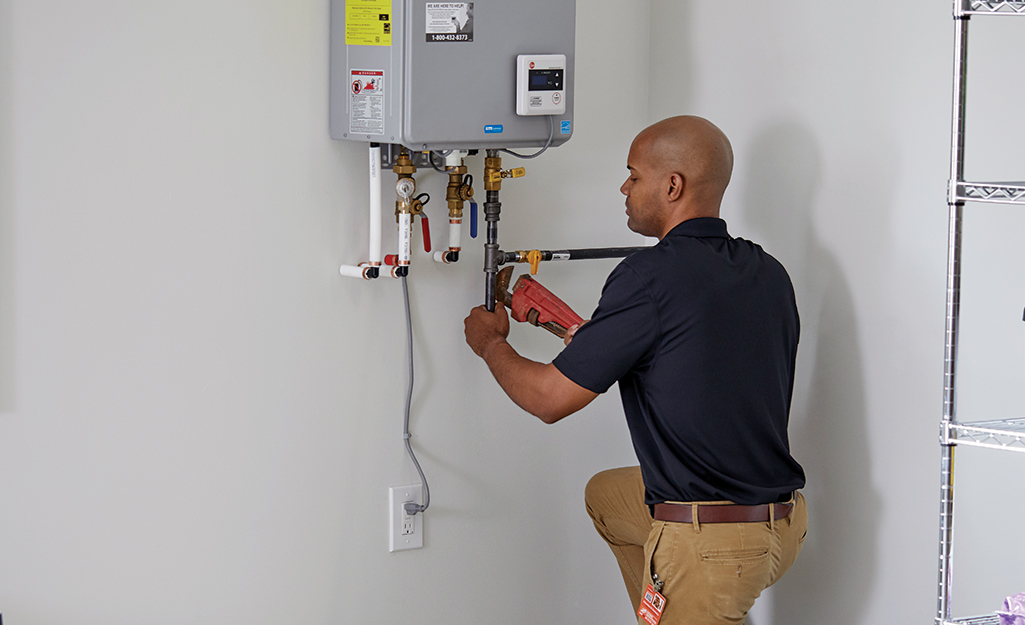Ways to Effectively Care for Your Home's Hot Water System
Ways to Effectively Care for Your Home's Hot Water System
Blog Article
Everybody is bound to have their unique assumption when it comes to What Kind of Maintenance Do Water Heaters Need?.

Hot water is essential for everyday comfort, whether it's for a revitalizing shower or washing dishes. To ensure your hot water system runs effectively and lasts longer, routine upkeep is key. This article supplies sensible tips and insights on just how to maintain your home's warm water system to prevent disruptions and costly repair work.
Introduction
Keeping your home's warm water system could seem complicated, but with a few straightforward steps, you can ensure it operates efficiently for many years ahead. This guide covers every little thing from understanding your warm water system to DIY maintenance suggestions and knowing when to contact expert assistance.
Significance of Keeping Your Warm Water System
Regular upkeep not just prolongs the life-span of your hot water system but also guarantees it operates successfully. Disregarding maintenance can bring about reduced performance, higher power costs, and even early failure of the system.
Indicators Your Warm Water System Demands Maintenance
Understanding when your warm water system requires focus can avoid significant issues. Look out for signs such as inconsistent water temperature level, strange noises from the heating system, or rusty water.
Comprehending Your Warm Water System
Prior to diving into upkeep tasks, it's helpful to recognize the basic parts of your warm water system. Generally, this includes the water heater itself, pipelines, anode rods, and temperature level controls.
Month-to-month Upkeep Tasks
Normal monthly checks can help catch small concerns prior to they escalate.
Flushing the Water Heater
Purging your hot water heater removes sediment buildup, improving efficiency and prolonging its life.
Monitoring and Replacing Anode Rods
Anode rods stop deterioration inside the tank. Evaluating and changing them when broken is vital.
Inspecting and Adjusting Temperature Settings
Changing the temperature settings makes sure optimum performance and safety and security.
DIY Tips for Upkeep
You can do several upkeep jobs yourself to keep your hot water system in top condition.
Looking for Leakages
Routinely inspect pipelines and connections for leaks, as these can lead to water damage and greater costs.
Checking Stress Alleviation Valves
Checking the pressure relief valve ensures it operates appropriately and protects against too much stress accumulation.
Protecting Pipes
Insulating warm water pipelines decreases warmth loss and can conserve power.
When to Call a Specialist
While DIY maintenance is advantageous, some issues need professional knowledge.
Complex Concerns Needing Professional Help
Instances include major leakages, electrical troubles, or if your hot water heater is regularly underperforming.
Routine Expert Upkeep Perks
Professional upkeep can include comprehensive inspections, tune-ups, and ensuring compliance with safety and security criteria.
Verdict
Normal upkeep of your home's warm water system is important for efficiency, durability, and price financial savings. By complying with these tips and understanding when to seek expert help, you can guarantee a reliable supply of warm water without unexpected interruptions.
How to Maintain an Instant Hot Water Heater
Before tinkering with your hot water heater, make sure that it’s not powered on. You also have to turn off the main circuit breaker and shut off the main gas line to prevent accidents. Also turn off the water valves connected to your unit to prevent water from flowing into and out of the appliance. 2. When you’re done, you have to detach the purge valves’ caps. These look like the letter “T†and are situated on either side of the water valves. Doing so will release any pressure that has accumulated inside the valves while at the same time avoid hot water from shooting out and burning your skin. 3. When the purge valves’ caps are removed, you have to connect your hosing lines to the valves. Your unit should have come with three hoses but if it didn’t, you can purchase these things from any hardware or home repair shops. You can also get them from retail stores that sell water heating systems. Read the user’s manual and follow it to complete this task properly. When the hosing lines are connected, open the purge port’s valves. 4. You should never use harsh chemical cleaners or solutions when cleaning your unit. Make use of white vinegar instead. It should be undiluted and you’ll probably use about 2 gallons. 5. Now flush your water heater. This task should probably take about 40 minutes. We can’t give you specific directions for this because the procedure is carried out depending on the type, model and brand of your heater. With that being said, refer to the user’s manual. 6. When you’re done draining the unit, you have to turn off the purge port valves again. Remove the hosing lines that you earlier installed on each of the water valves. Put the valve caps (purge port) back in their respective places and be very careful so as not to damage the rubber discs that are found inside these caps. 7. Now that everything’s back in place, check your user’s manual again to find out how to reactivate your water heating system. 8. Once it is working, turn one of your hot water faucets on just to let air pass through the heater’s water supply pipes. Leave the tap on until water flows smoothly out of it. https://www.orrplumbing.com/blog/2014/september/how-to-maintain-an-instant-hot-water-heater/

Hopefully you enjoyed our section about Tips For Maintaining Your Hot Water Heater. Thank you for taking a few minutes to read our piece of content. Sharing is caring. You won't know, you could be doing someone a favor. Thank you for going through it.
Schedule Your Job Now Report this page